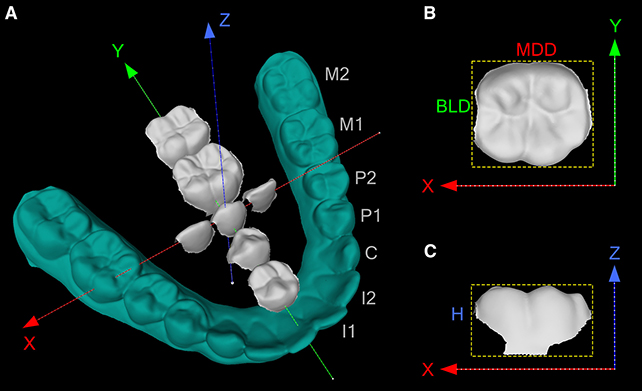A new study identifies 18 genome regions that influence tooth size and shape, of which 17 have not been linked to our chompers before – and shows how genetic variation affects tooth dimensions across ethnicities.
One of the variants, in the gene HS3ST3A1, could have been inherited from Neanderthals, according to the international team of scientists. It was only found in study participants of European origin, with thinner incisors.
“We have now identified numerous genes that impact the development of our teeth, some of which are responsible for differences between ethnic groups,” says statistical geneticist Kaustubh Adhikari, from University College London.

The team cross-referenced genetic data against tooth measurements from a total of 882 individuals in Colombia, with mixed European, Native American, and African ancestry. They also looked at how the key genes involved affected tooth development in mice when they were switched on or off.
As well as discovering the link between HS3ST3A1 and tooth size and shape, the researchers found that a gene associated with tooth shape among East Asians, known as EDAR, has specific effects on the development of crowns largely among Native Americans.
Another finding from the study is related to the PITX2 gene: already known to affect tooth growth and face shape, here the researchers were able to show variants in the gene can control molar size, molar cusps, and even jaw shape.
Modern humans have significantly smaller teeth than those of many of our ancestors and ancient relatives. This research tells us more about how our teeth have evolved over the millennia, and how both genetics and environmental pressures may have both played a role.
“Teeth can tell us a great deal about human evolution, as well-preserved ancient teeth are particularly important to archaeologists, shedding light on milestones such as when we transitioned to cooked food and human tooth sizes began to shrink,” says Adhikari.
“But little is known about the genetic basis of variation within the modern human population on tooth size and shape, partly due to challenges in measuring teeth.”
Scientists are only just getting started when it comes to studying teeth through what are known as omics technologies: looking at large amounts of biological data covering not just genetic variations, but also gene regulation, activation, and protein production.
In addition to tracking the shape and size of teeth through time, studies like this can aid in identifying causes and potential treatments for a variety of dental health problems – many of which are linked to genes.
“We hope that our findings could be useful medically, if people with particular dental problems could undergo genetic tests to help in diagnosis, or if some dental anomalies could be treated one day with gene therapies,” says geneticist Qing Li, from Fudan University in China.
The research has been published in Current Biology.








Leave a Comment